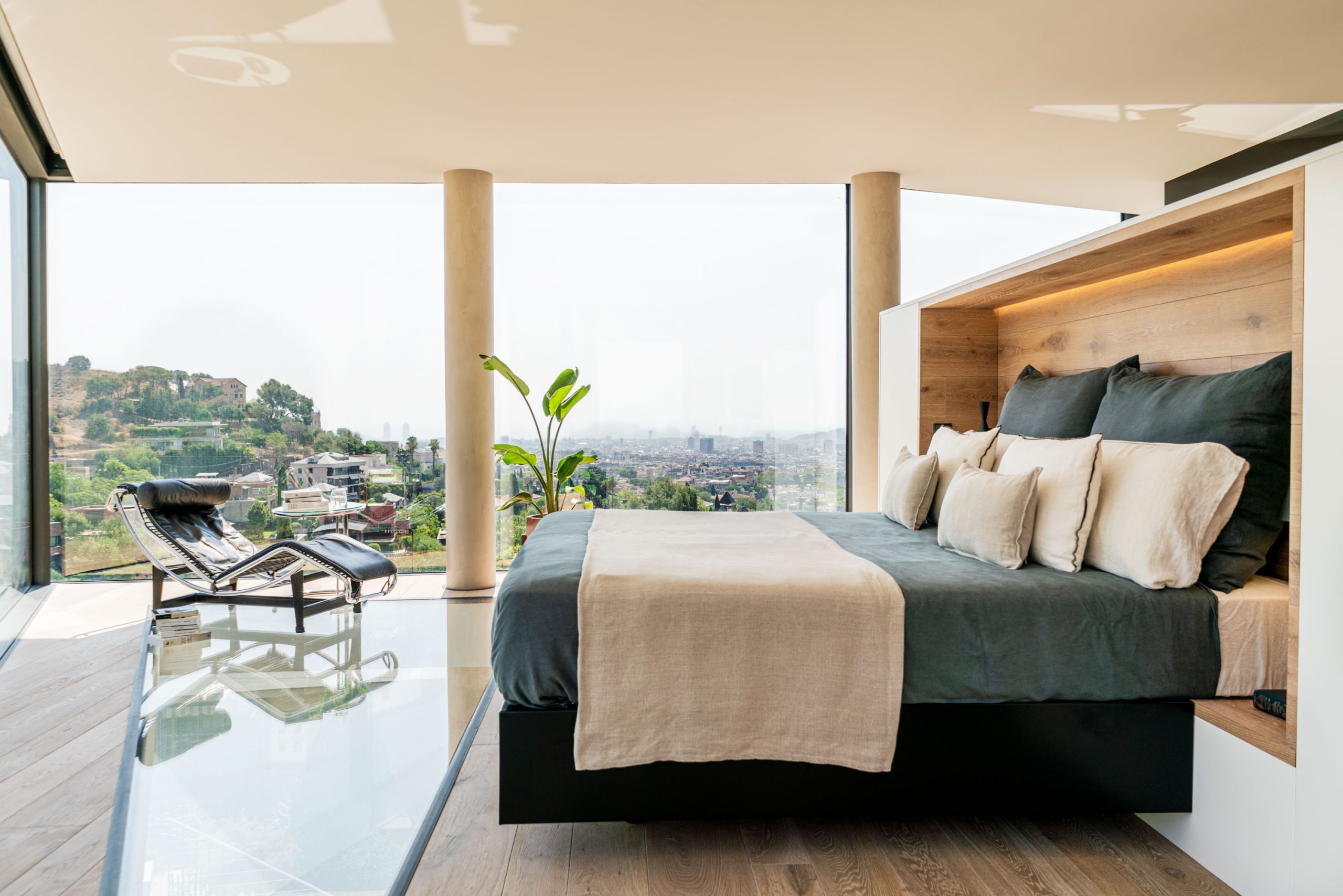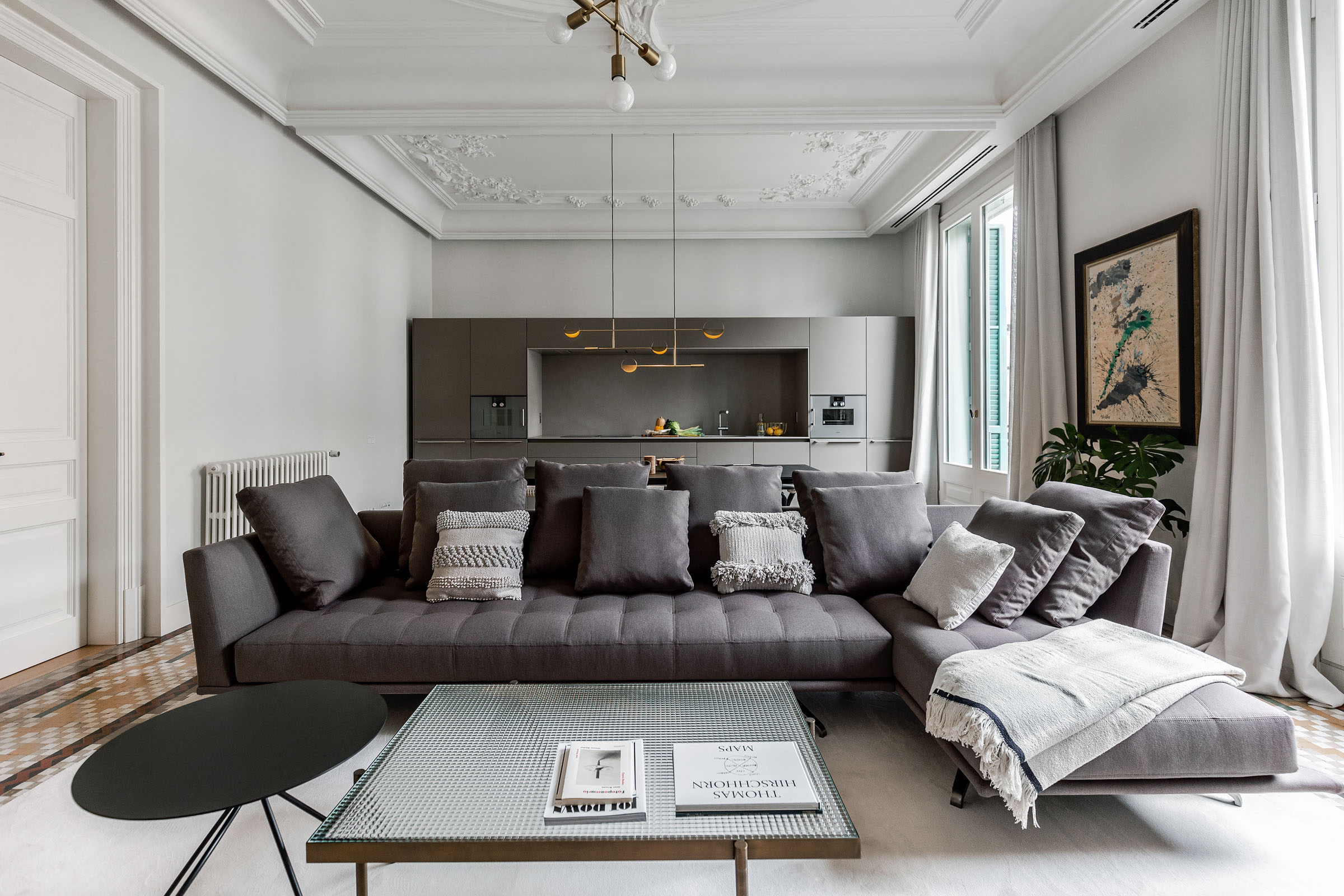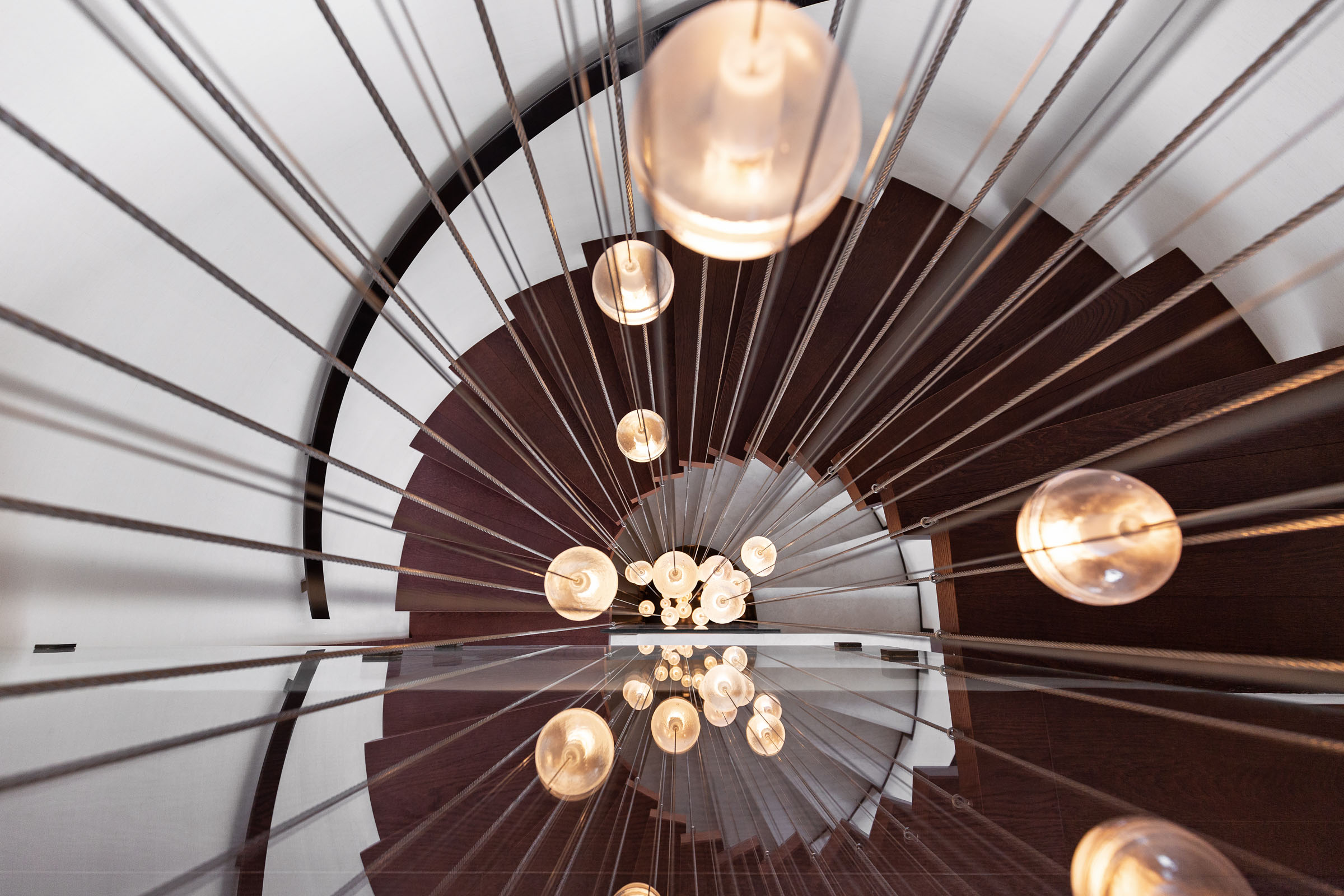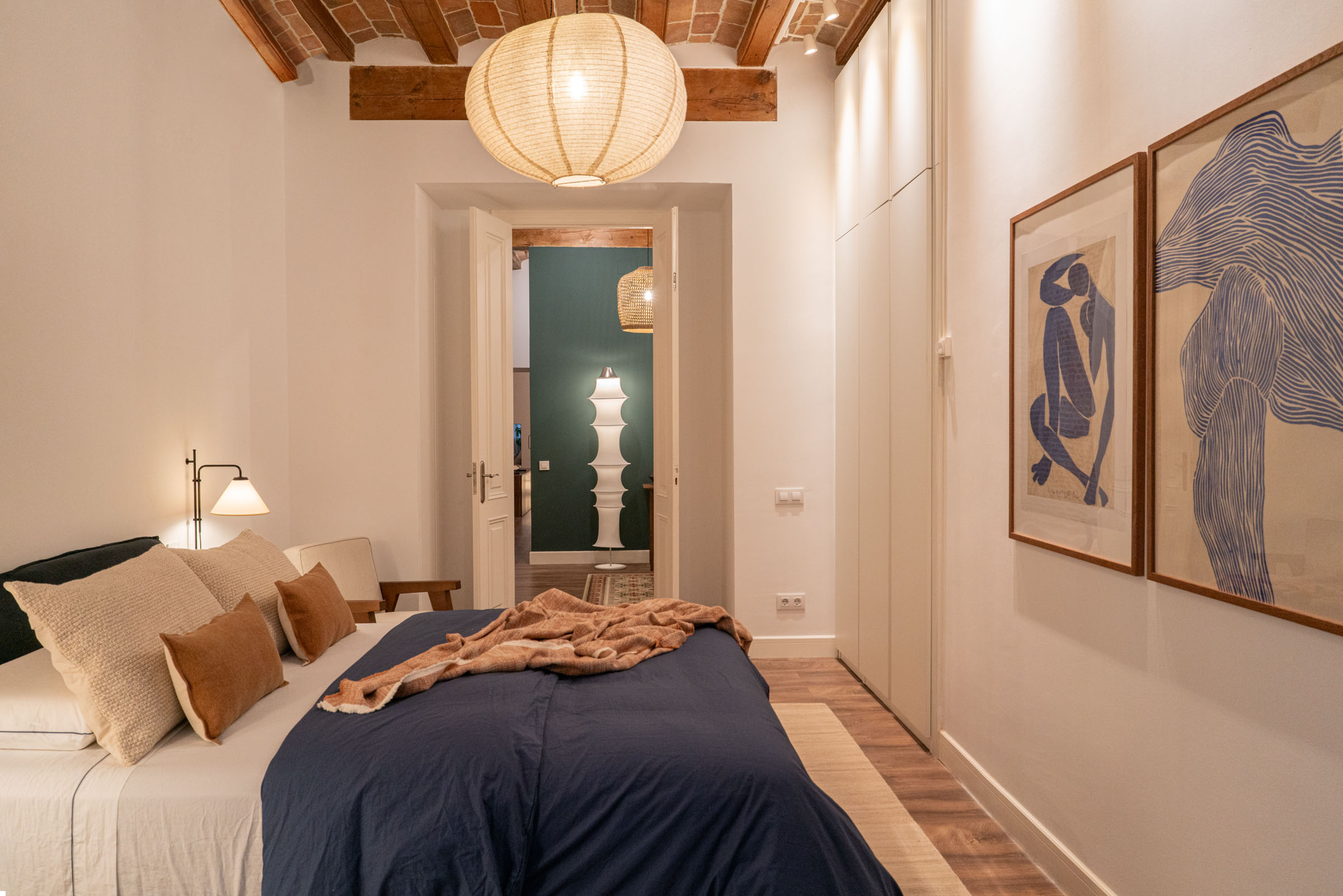Ambient lighting: how to transform your spaces with light
General
Lighting is a key element in any interior design project. Light can be a transforming factor in spaces, allowing you to create a cozy and functional atmosphere. We explore the latest innovations in lighting and break down all the details about the typologies of ambient lights. We also explain how to plan a good lighting scheme and reveal all the tricks to plan light and take advantage of it to gain breadth and turn it into an investment in well-being.
What is ambient lighting?
We put the basic concepts on the table. Ambient light is a type of lighting that allows you to create an environment that is visually pleasant, while also practical and functional thanks to a strategic arrangement of light.
In a modern home, this type of lighting is essential to achieve a cozy and relaxing atmosphere. The key is to use it to highlight the focal points of each space without creating annoying shadows.
Type of ambient lights
Indirect light
Indirect light is ideal for softening contrasts and creating uniform lighting in each specific space in your home. It is usually used to illuminate ceilings or walls, and creates a warm and comfortable environment.
Spot light
An extremely useful tool to highlight specific points such as paintings, objects or specific spaces within a room.
Accent light
Use it to highlight architectural elements such as arches, columns or other features of the space. This lighting approach is also effective if implemented in businesses or commercial premises. Achieving optimal lighting in shops increases the well-being of workers, directly influences the customer experience and is vital to enhance and add value to the products.
Diffused light
Diffused light is ideal for achieving soft, homogeneous lighting within your home without creating harsh shadows. We recommend using it for the living room and bedrooms.
How to plan ambient lighting in your home?
Proper ambient lighting planning can completely transform the look and functionality of your modern home. And, to help you achieve this, we propose some practical tips.
Fraction spaces
Use lighting to zone the same space, differentiating, for example, the work area and the rest area.
When lighting bathrooms, it is an effective resource to divide the different areas of these spaces. In this specific case, you can consider soft and relaxing general lighting that is not harsh or intrusive. For the sink or shower/bathtub areas, incorporate wall lights around the mirror or LED lights to ensure that the lighting is focal, direct and precise, and allows you to carry out activities that require precision, such as personal hygiene, applying makeup or brush your teeth.
Choose attractive lamps
Choosing lamps that complement the style of your space is an effective, functional and efficient resource to achieve ambient lighting that exudes character and personality.
Avoid glare
Use screens or diffusers to prevent direct light from dazzling you. In this way, you will soften the lighting and create an environment that is pleasant for the eyes.
Often, one of the most common mistakes in lighting is incorporating harsh, direct lights in the bedroom that end up bothering the user’s vision. To have good lighting in the bedroom, it is crucial to select lights with soft, warm tones that offer pleasant ambient light.
Prevent light from shining directly into your eyes when you are in bed and incorporate blackout or semi-transparent curtains or blinds to control the amount of natural light that enters the room.
Modulate the temperature
Experiment with the color temperature of the light to adapt the environment to the different activities carried out within a particular space in your home.
How to use lighting to gain space?
Lighting is also vital to accentuate the feeling of spaciousness in a home. To do this, we propose our essential recommendations:
- Spread the light throughout the room and do not use a single lighting source.
- Use wall lights to illuminate corners and corners.
- Place hanging lamps to emphasize the height of the room.
- Opt for narrow and tall lamps to take advantage of the vertical space and enhance a feeling of greater spaciousness.
- Play with mirrors so that light bounces throughout the space.
- It incorporates lamps with square shapes within small surfaces.
Innovations in ambient lighting
Ambient lighting has seen significant advances thanks to technological innovations. New options in materials and control systems have transformed the way we conceive and use light in our interior spaces. These are some of the latest trends:
1. Smart lighting: allows you to control the intensity, color and even the on and off of the lights using smart devices such as smartphones or voice assistants. It offers great flexibility and allows you to create different lighting scenes.
2. Latest generation LEDs: they stand out for their energy efficiency and longevity. And they are an excellent option to achieve a variety of color temperatures and are easily integrated into the environment.
3. Integration of light and architecture: the current trend is to integrate lighting directly into the architectural elements of the space. This includes lines of light hidden in walls, ceilings or furniture to create lighting effects that are already an intrinsic part of the interior design.
4. Dynamic lighting: Thanks to modern control systems, it is possible to program dynamic lighting scenes that change throughout the day or in response to the user’s needs, with subtle variations in color temperature that allow the light to adapt to the conditions. different phases of the day or activities.
5. Centralized control systems: an effective tool that allows you to manage all the lighting in a space from a single interface. This not only improves the user experience, but also offers efficient and intelligent light control, enhances energy optimization and increases the durability of lighting systems.
Impact of ambient lighting on well-being
It is something that well-designed and balanced lighting can significantly improve well-being and emotional health. Ambient home lighting goes far beyond turning on a light bulb. It is a transformative element of the atmosphere that your home gives off and can change the way the user interacts with the space. And, precisely for this reason, it is vital to ask yourself basic questions, how to make the most of warm light or cold light, depending on your preferences.
In essence, the lighting of a modern home is not only a matter of functionality, but also of creativity and well-being. If you want to incorporate optimal ambient lighting and intelligent light planning inside your home, do not hesitate to contact us to request personalized advice, or consult our social networks to be inspired by our projects and transform every corner of your home into an attractive and comforting visual experience.







